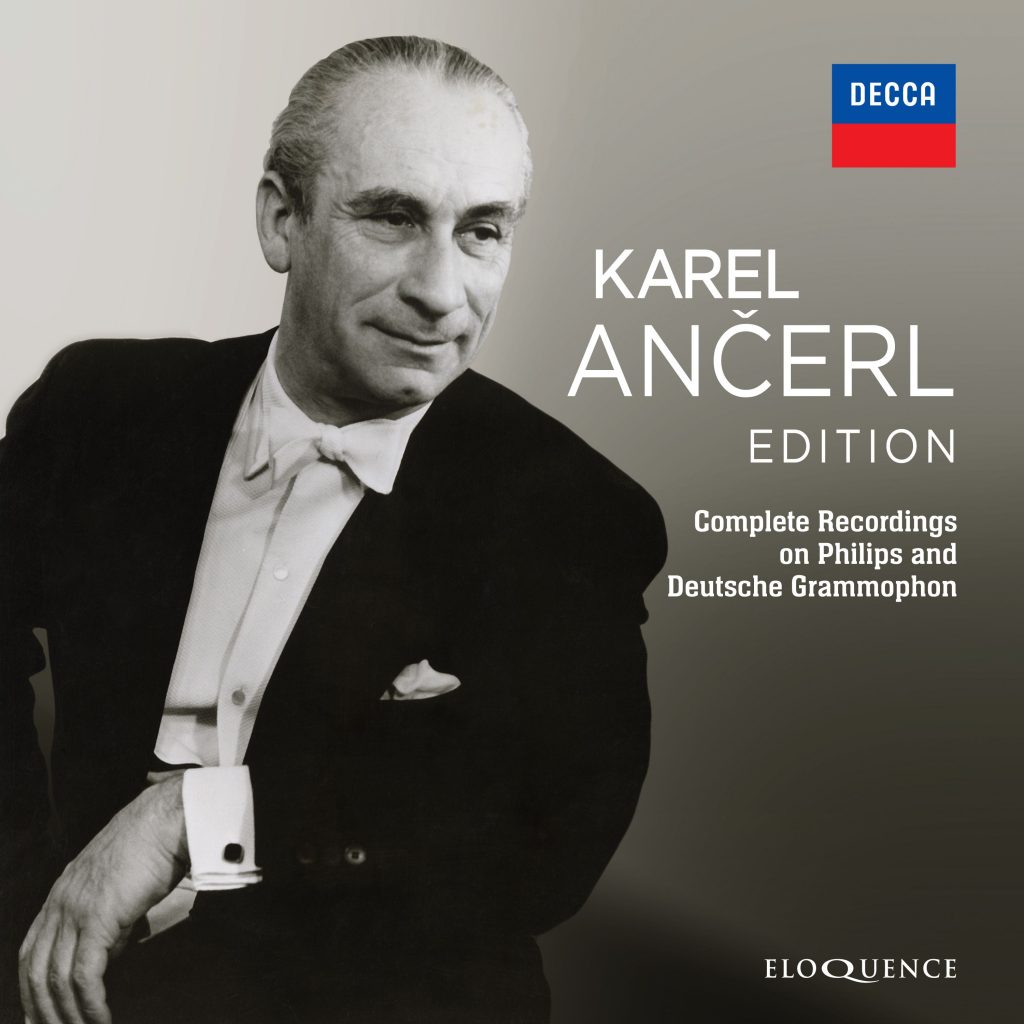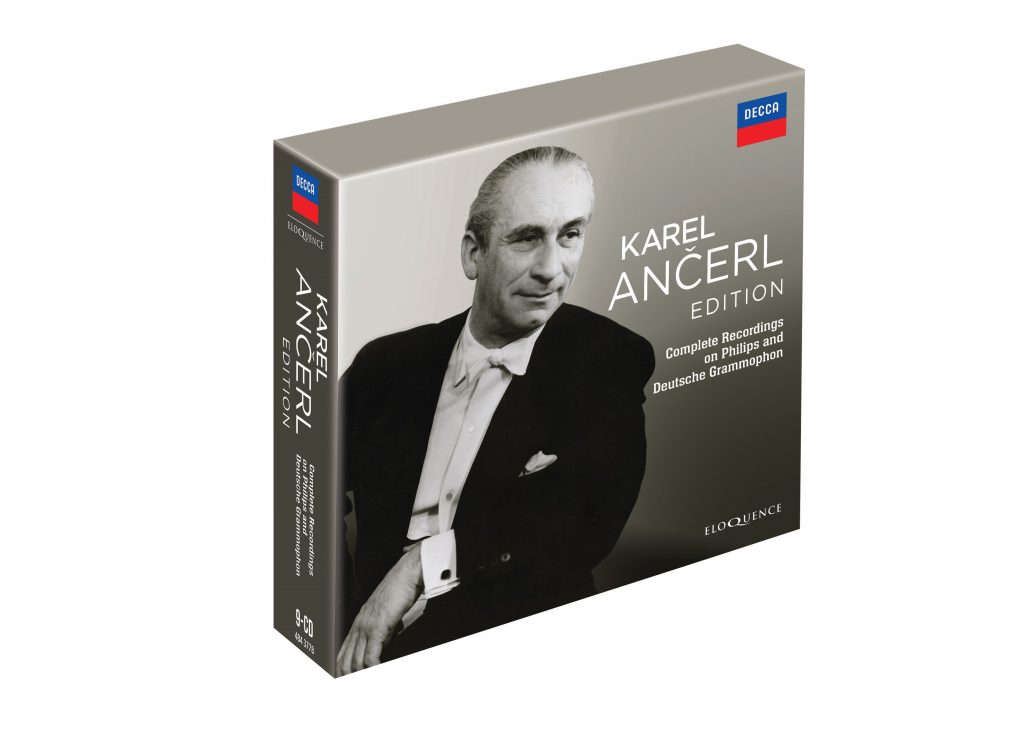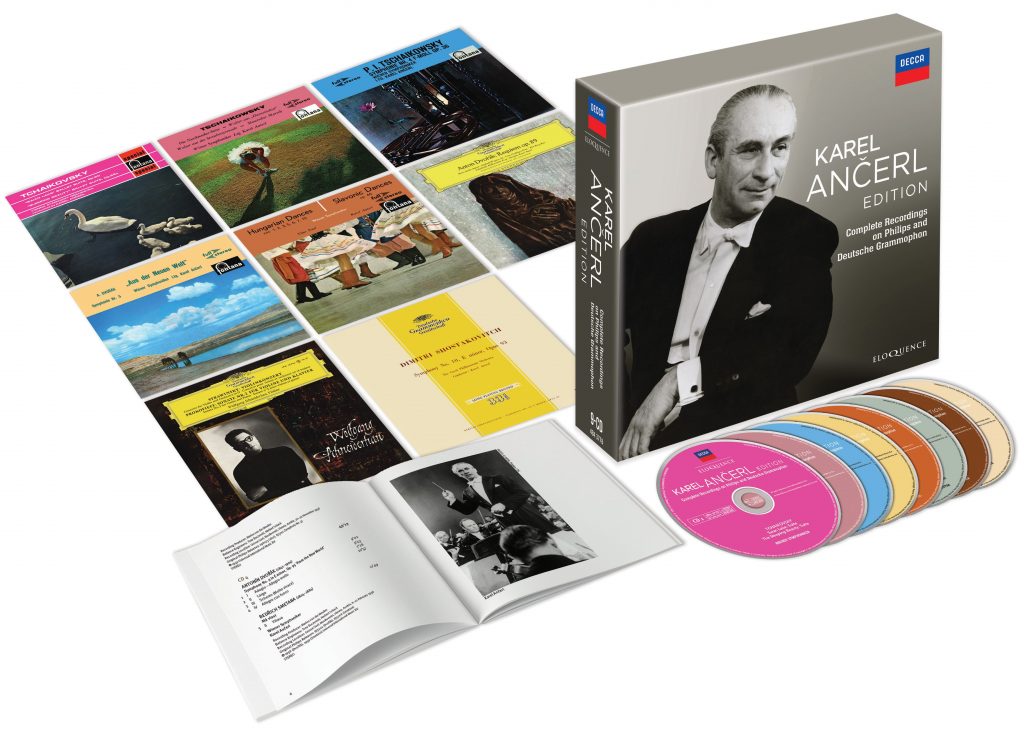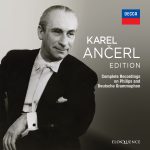


Karel Ančerl made most of his recordings behind the Iron Curtain for the Supraphon label, as chief conductor of the Czech Philharmonic between 1950 and 1968. However, as the Czech Philharmonic Orchestra began to tour abroad, Ančerl’s own reputation rose with them, and he accepted invitations to lead orchestras across Europe and the US.
Deutsche Grammophon recorded the Czech Philharmonic and Ančerl while they were on a tour of Germany in 1955, and international listeners discovered the ‘Ančerl style’ – taut, with clean lines, yet always an eloquent singing quality to the melodies – as it applied to the Tenth Symphony of Shostakovich.
The mono LP set the standard for recorded versions of the symphony in years to come. So did the subsequent DG recording, made in Prague, of the Requiem by Dvořák. Though the cast of solo singers is German, featuring Maria Stader on the top line, the burning passion of the performance as a whole is inimitably Czech. Ančerl was an equally superb Stravinskian, and his DG recording of the Violin Concerto complements his Supraphon legacy of the ballets and vocal works.
In the spring of 1958, Ančerl made several albums with the Wiener Symphoniker, which had become a ‘house band’ for Philips. The demonstration-quality engineering of the Dutch label complemented the conductor’s intensely dramatic approach to Dvořák (the Ninth Symphony), Smetana (Vltava) and a collection of Tchaikovsky including ballet suites, the 1812 Overture and the Fourth Symphony.
Preserving the original coupling of Dvořák’s Op. 46 Slavonic Dances, we have the first official CD/Digital release of Tibor Paul’s recording of seven of Brahms’s Hungarian Dances.
Ančerl brought to Czech and Russian repertoire in particular an old-school authority balanced by a warmth and even a vulnerability that seems to reflect his own temperament. His DG and Philips legacy captures him on top form, and this edition evokes the spirit of the time with original covers and a new essay by Peter Quantrill exploring Ančerl’s life, his rocky relationship with the Czech Philharmonic and the background to these recordings.
CD 1
TCHAIKOVSKY Swan Lake: Suite
The Sleeping Beauty: Suite
Wiener Symphoniker
CD 2
TCHAIKOVSKY The Nutcracker: Suite
Waltz from Serenade for Strings
Romeo and Juliet; Marche slave
Wiener Symphoniker
CD 3
TCHAIKOVSKY 1812 Overture
Symphony No. 4
Wiener Symphoniker
CD 4
DVOŘÁK Symphony No. 9
SMETANA Vltava
Wiener Symphoniker
CD 5
DVOŘÁK 8 Slavonic Dances, Op. 46
BRAHMS 7 Hungarian Dances*
Wiener Symphoniker
*Tibor Paul
CDs 6–7
DVOŘÁK Requiem
Stader ∙ Wagner · Haefliger ∙ Borg
Czech Chorus, Prague
Czech Philharmonic Orchestra
CD 8
STRAVINSKY Violin Concerto
PROKOFIEV Violin Sonata No. 2
Wolfgang Schneiderhan
Berliner Philharmoniker
Carl Seeman
CD 9
SHOSTAKOVICH Symphony No. 10
Czech Philharmonic Orchestra
“The most superlative orchestral playing … There is a neatness and point to the string and wind playing alike that is only seldom heard, even on record.” Gramophone, September 1956 (Shostakovich: Symphony No. 10)
“Ančerl takes the [Nutcracker] Suite at lively tempi … Recommended.” Gramophone, October 1959 (Tchaikovsky)
“The balance is right … Detail, even the softest timpani notes, is remarkably clear … Ančerl’s performance is as honest as the recording.” Gramophone, October 1959 (Tchaikovsky: Symphony No. 4)
“The performance it receives here is an authoritative, devoted and highly polished one, completely worthy of the noble score.” High Fidelity, June 1960 (Dvořák: Requiem)
“Schneiderhan’s account of the Stravinsky Violin Concerto is splendidly alert and astringent, and the Berlin orchestra under Karel Ančerl gives deft and expert support.” Gramophone, August 1971 (Stravinsky: Violin Concerto)
“This is an outstanding release … Ančerl’s fervent performance leaves little to be desired. The choral singing is superb; both chorus and orchestra – in a sense, the home team – know the idiom full well. The soloists, imports all, are no less splendid, individually and collectively.” Fanfare, January 2004 (Dvořák: Requiem)
“A taut, uneccentric reading, with tempos that always seem just right … Listeners will have no trouble hearing that Ančerl is to the manner born in these works from the core Czech repertoire.” Fanfare, September 2015 (Dvořák: Symphony No.9; Smetana: Vltava)
“There was nothing routine about Ančerl’s interpretations. He had a superb grasp of a work’s architecture, and he possessed an uncanny ability, in a subtle but most effective manner, to ratchet up the excitement and tension in the ‘big’ moments … I can’t imagine anyone being disappointed by the quality of the music making to be found here.” Fanfare, January 2018 (Complete Philips Recordings)
“The work is magnificently laid out by the conductor and the playing alternates inwardness and force in ideal proportions.” Gramophone, August 2003 (Shostakovich: Symphony No. 10)



